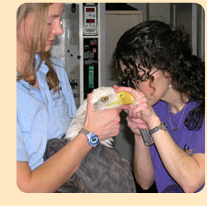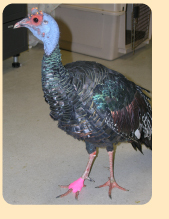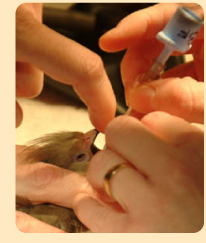
Visitors to the National Aviary have a new opportunity to get close to the birds and gain unique insight into the advanced healthcare offered to the more than 200 species that make their home here.
A new bird hospital annex in the facility’s main building offers guests the chance to watch procedures and check ups, and to get to know some of the patients undergoing treatment through ”Meet a Patient,” a new program sponsored by Highmark Blue Cross Blue Shield.
 Each day at noon
Each day at noon, veterinary staff will bring birds to the Atrium for “Meet a Patient.” Staff will talk and answer questions about the challenges of treating birds that range from tiny songbirds to meat-eating raptors.
“The ‘Meet a Patient’ program is a special opportunity for visitors to get to know the Aviary’s birds as individuals and to hear their stories,” says Dr. Pilar Fish, Director of Veterinary Medicine at the National Aviary. “We believe it will give our guests a greater appreciation for birds while raising awareness of bird healthcare. We also hope that it inspires some of our young visitors to pursue a career in animal care or veterinary medicine.”
Because managing the health needs of such a broad range of species requires specialized knowledge and skills, advanced care at the National Aviary requires ingenuity. Not only are fragile birds difficult to handle, standard veterinary surgical equipment is too bulky for Aviary residents, and prescription medicines must be customized to each individual bird.

“We frequently perform microsurgery on small birds, even patients as small as 12 grams, which is the size of a red grape,” says Dr. Fish. “Because equipment used by domestic vets is too large, we adopt human heart and eye surgery instruments to handle delicate bird tissue. For example, when gas anesthesia is needed, we create tiny breathing tubes from intravenous catheters and often must manually ventilate the patient throughout the entire surgery.”
Chips and breaks to the beak are common to all birds. In the wild, a damaged beak can mean that a bird is unable to eat or hunt, but at the National Aviary, beak repairs are made using a specialized process that incorporates the same dental acrylics used for human teeth. National Aviary veterinary technicians go a step further by mixing pigments with the acrylic to match the color of the beak so that the repaired area is not obvious. If the damage is too severe to be corrected with acrylic, then bridges or even prosthetic beaks are made.
“Whether they are in the wild or in a zoo setting, birds commonly experience injuries and illness,” says Dr. Fish. “A physical problem can mean death for a wild bird, but the birds at the National Aviary have the advantage of a terrific staff and a medical team that is prepared at any moment to handle emergencies or sickness. As a result, the National Aviary’s birds live significantly longer and healthier lives than their wild counterparts.”


